The story of the modern domesticated donkey begins in Africa – mostly Sudan, Egypt, and Libya. While all modern equines are descendants of dog-sized forest dwellers that roamed the United States millions of years ago, the donkey as we know it today more closely resembles its most recent ancestor: the African wild donkey (or African wild ass).
Where do donkeys come from? The donkey as we know it today more closely resembles its most recent ancestor: the African wild donkey (or African wild ass). Donkeys were brought to the North American continent by Christopher Columbus.
Table of Contents
Ancient Donkeys
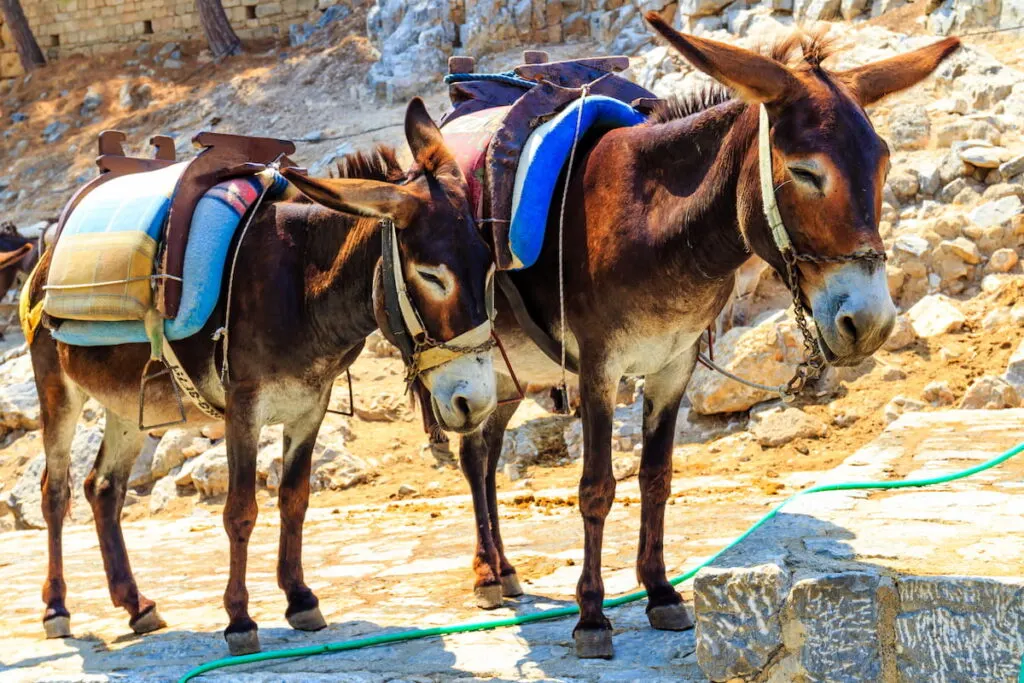
Archaeological evidence of early domestic donkeys has been found all over the world – in ancient Egypt, Mesopotamia, Asia, and Greece.
In the 7th and 8th millennia, donkeys began to replace the ox as the primary beast of burden in the Nile River region. Remains of ten donkeys were discovered in some of the oldest Egyptian tombs, buried with the pharaoh in a manner usually reserved for important humans.
Donkeys appear in ancient Egyptian paintings as important working animals, carrying heavy loads and providing milk and meat. They were also comfortable to ride, and they could carry people for long distances. This allowed groups of people to move around more freely and spread throughout Africa, Asia, and Europe.
Donkeys provided a great service to the people of these regions. Unlike oxen, they could survive on smaller amounts of food, less water, and provide a comfortable ride (and it was faster than traveling by foot!)
Donkeys could also pull heavy carts without much difficulty, which allowed people to transport goods across much farther distances.
There are over 185 breeds of donkeys in the world today, and nearly 41 million donkeys are used in much the same ways as they were in ancient times.
Wikipedia, (source)
Popular Donkey Breeds
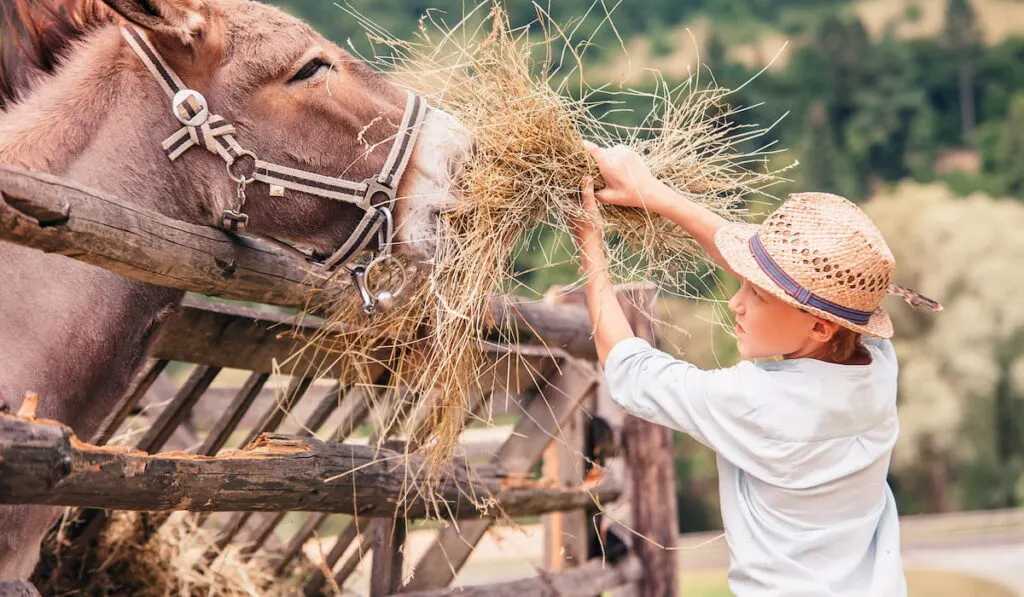
In the United States, there aren’t as many varieties of purebred donkeys as there are horses. Donkey breed registries do exist, but the requirements for entry into a specific registry are often based on height and type, rather than breed.
Most donkey breeds worldwide were developed based on the needs of the people using them, so that they were better suitable for the climate and necessary work. Here are just some examples of different donkey breeds around the world.
| Breed | Country of Origin | Uses and Characteristics |
| Standard, Mammoth, Miniature | United States | Donkeys in the US are most often used as companion animals or pets. They are categorized by size, rather than breed: Miniature donkeys stand less than 36” tall, Standard donkeys are between 36” and 54”, and Mammoth donkeys are 54” and up. |
| Andalusian | Spain | This tall, refined donkey was used to refine mules in the United States in the late 18th century. |
| Poitou (Baudet de Poitou) | France | This funny-looking shaggy donkey is known for its characteristic long hair, which can form dreadlocks and sometimes reaches the ground! |
| Burro | Mexico, Nicaragua, US | These “wild” donkeys are actually feral – descended from loose donkeys brought to the Americas by the conquistadors. In the US, they are protected by federal law, and are regularly rounded up and adopted out. |
| Sardinian | Italy | These small donkeys are also referred to as “Mediterranean donkeys” and is the foundation breed for Miniature donkeys in the US. |
Donkey Jobs – What Donkeys are Good For
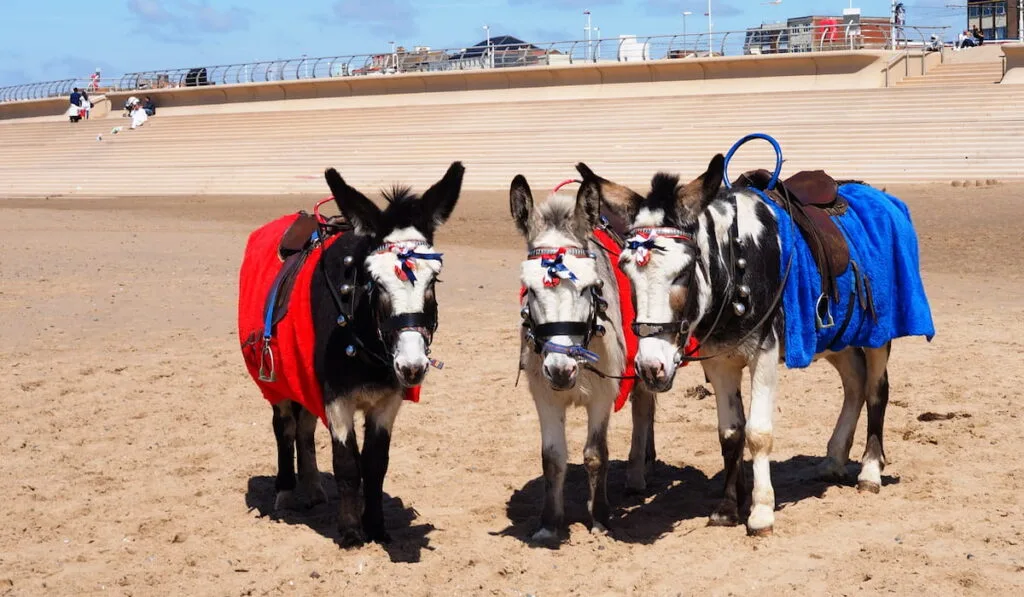
Donkeys became a primary source of transportation for ancient desert and mountain people. Surefooted and wise, they are careful in treacherous terrain and strong enough to handle tricky trails with heavy loads.
Today, donkeys still provide these services to people all over the world, especially those living in impoverished areas of Africa, Asia, and Central and South America.
- Beasts of burden. Donkeys are comfortable carrying more than 100 pounds on their backs. That’s a lot of potatoes! Donkeys are still used today to carry agricultural products and other goods. (source)
- Transportation. Despite standing shorter than most horses (around 11 hands high), donkeys can carry human riders if necessary. Just don’t expect to get where you want to go as quickly as you would while on horseback.
- Meat and milk. Just like goats, sheep, and cows, donkeys can provide meat and milk. However, modern donkeys in the US are kept mostly as pets, or bred to horses to create mules.
- Mule breeders. Breeding a female horse to a male donkey results in a strong, intelligent animal called a mule. Breeding a male horse to a female donkey results in a hinny, which can be just as useful as mules, but are harder to obtain and therefore generally less common.
Religious Figures
Before Mary rode a donkey from Nazareth to Bethlehem to give birth to the baby Jesus, donkeys appeared in ancient Greek and Latin writings of Homer, Aesop, and Apuleius. Donkeys have appeared in stories (both religious and secular) since they were first discovered.
Greek/Roman Myth
Donkeys were associated with Dionysus, the ancient Greek God of wine, fertility, theater, and overall merriment (his Roman name was Bacchus, and he was quite the life of the party).
As the story goes, Dionysus came to a lake that was so deep and wide, he could not cross it – but two donkeys appeared and saved the day, ferrying him across the lake to the temple of Dodona.
The grateful Dionysus immortalized these donkeys in the stars as constellations. He is often depicted astride a donkey. (source)
Islam
Donkeys appear in the Quran four distinct times. At times, the prophet Muhammed rode a donkey called Ya`fūr, which means “deer” in Arabic. Ya`fūr could speak, and claimed to be descended from the donkey that Jesus rode during his return to Jerusalem. (source)
Hindu
The Goddess Kalraatri is often depicted aboard her donkey. She successfully chased down the demons Chanda and Munda while riding her trusty steed, brought them back to the Goddess Kali, and vanquished them. (source)
Biblical Donkeys
Donkeys appear many times throughout the Bible as both important religious and historical symbols. Traveling by donkey was a way of life for even the wealthiest kings in Biblical times, and they appear in many important stories to teach lessons about humility and wisdom.
Here are some examples of important Biblical donkeys:
- Balaam and the Angel. Balaam’s donkey balks when they encounter an invisible Angel with its sword drawn. Balaam hits his donkey repeatedly to move forward (unable to see the threatening figure), until: “the LORD made the donkey speak, and it asked Balaam, “What have I done to make you hit me three times?” Balaam answered, “You’ve made a fool of me! If I had a sword in my hand, I’d kill you right now.” The donkey said to Balaam, “I’m your own donkey. You’ve always ridden me. Have I ever done this to you before?” “NO,” he answered. Then the LORD let Balaam see the Messenger of the LORD who was standing in the road with a sword drawn”. (Num 22:28-31)
- Mary traveled from Nazareth to Bethlehem via donkey. Heavily pregnant, Jesus’ mother Mary travels from Nazareth to Bethlehem aboard a donkey – a 90-mile journey that could have taken 4-6 days on foot.
- Jesus’ triumphant return to Jerusalem. When Jesus rides through the gates of Jerusalem on a young, unbroken donkey, it sent the message that “Your King is coming to you: He is righteous and victorious. He is humble and rides on a donkey”. A servant of the people, Jesus chose to ride a humble donkey rather than be carried in the fine trappings of a horse-drawn chariot.
- The Ten Commandments. These important tenets of Christianity spelled out a moral code that was pretty clear – “Never desire to take your neighbor’s household away from him. Never desire to take your neighbor’s wife, his male or female slave, his ox, his donkey, or anything else that belongs to him.”
American Donkeys
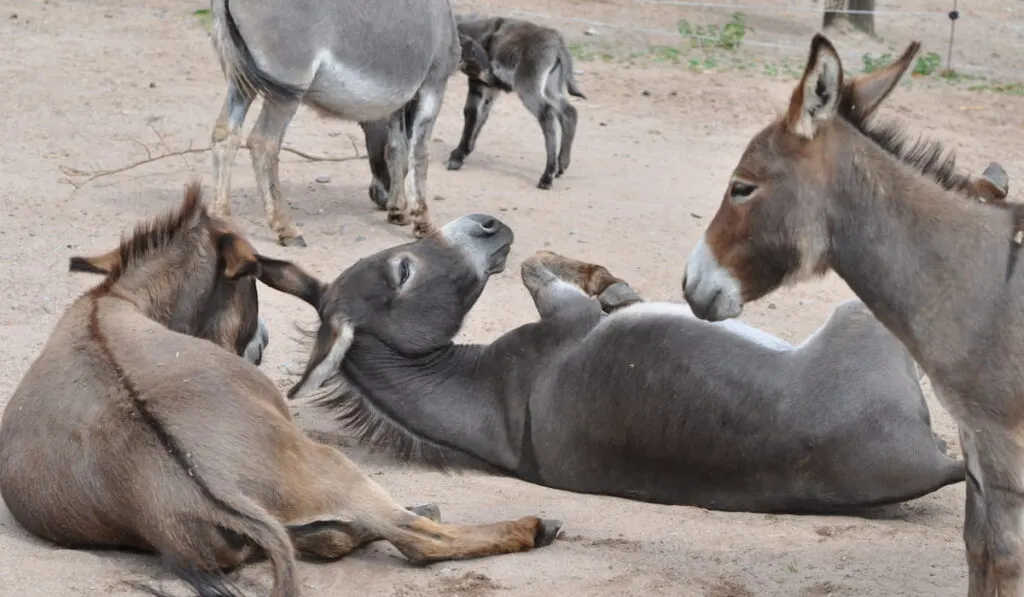
Donkeys are not native to North America. During his second voyage to the Americas, Christopher Columbus brought horses and donkeys to the New World. Donkeys served as pack animals in much the same way that they did back in Spain, but they were also used to create strong riding mules as well.
Other Spanish conquistadors arrived, and they too brought donkeys into the mountains and deserts to set up Christian missions and search for gold. As donkeys either escaped or were turned loose, populations of feral donkeys began to appear in the Americas, and the “Wild” Burro was born.
George Washington was gifted several fine donkeys in the late 1700s, and he used them to produce tall, strong mules that were the foundation of the Mammoth Jackstock donkey breed today.
Eventually, settlers turned to the frontier of the American West – and many were looking for fame, fortune, and gold. Donkeys became increasingly popular with gold miners, as they were surefooted and strong enough to haul supplies to previously unsettled territory.
Donkeys of Today
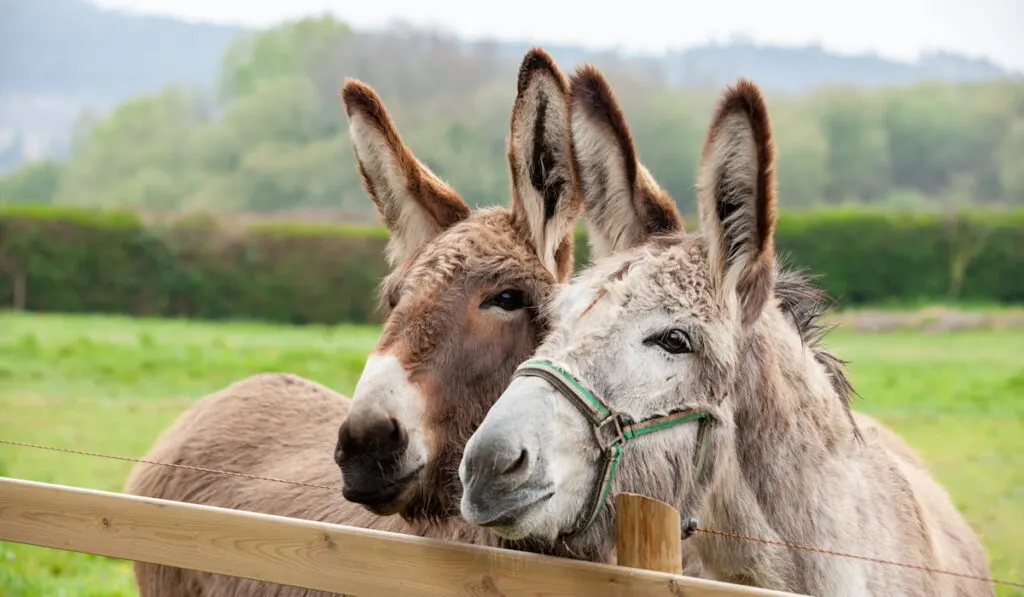
In the US, most donkeys are used as pets or companions for other farm animals. They can provide comfort to nervous horses, and they can alert flocks of sheep to nearby predators with formidable braying.
Donkeys are often referred to as “the poor man’s horse.” They are still used around the world as pack animals and companions, and they have an important role to play for people in rural agricultural areas.
Without donkeys, farmers would have difficulty harvesting and transporting their crops. Sheep and goat herds would be subject to predation. And, donkey meat and milk is just as nutritious and beneficial as cow or goat milk (and some would argue that it’s even more valuable in that respect).
Whether you’re looking for a pet or a working partner, the donkey has a long relationship with humans – and they continue to be the same hardworking, strong, and versatile creatures that were domesticated thousands of years ago.
Source:
- https://livestockconservancy.org/index.php/heritage/internal/amj

